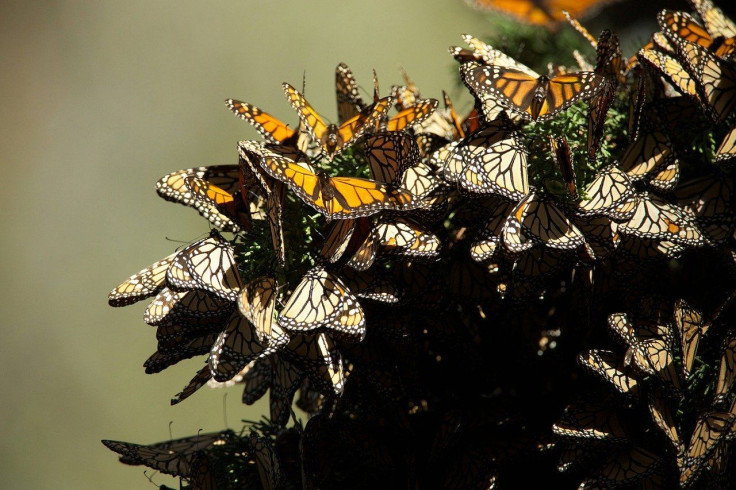Monarch Butterfly Numbers Down By Over 50 Percent
KEY POINTS
- Monarch butterfly numbers dropped by 53 percent in their overwintering areas
- Conservationists say the monarch numbers are well below the extinction threshold
- Herbicide and pesticide use as well as habitat loss are main threats to monarch butterflies
Mexican authorities, recently, released the yearly count for monarch butterflies overwintering in Mexico and the numbers show that the population decreased by more than 50 percent. An expert says that the population decline is not cause for alarm but others say describe it as heartbreaking.
Monarch Population Decline
Because monarch butterflies cluster together densely in trees, their population is counted by the area that they cover rather than the actual number by individuals. Last year, for instance, monarch butterflies covered 6.05 hectares (14.95 acres). However, the latest count provided by World Wildlife Fund (WWF) Mexico found that the overwintering monarchs only occupied 2.8 hectares (6.9 acres) this year. That means the monarch numbers decreased by 53 percent.
Evidently, the population decline can be attributed to poor weather conditions during the spring and fall migrations. Further, the monarch caterpillars' only source of food, milkweed, has been devastated by the use of herbicide, while the monarchs themselves are also being affected by neonicotinoid insecticides that are toxic to caterpillars and detrimental to the health of adult butterflies.
'Heartbreaking'
According to WWF Mexico director Jorge Rickards, the decline is still not alarming because the high numbers recorded last year were actually "atypical." In fact, the government commission for natural protected areas even described the monarch population as "stable" despite the significant decline.
However, other environmentalists are concerned over the monarch butterfly numbers.
"Scientists were expecting the count to be down slightly, but this level of decrease is heartbreaking," Center for Biological Diversity senior scientist Tierra Curry said. "Monarchs unite us, and more protections are clearly needed for these migratory wonders and their habitat."
It is worth noting that during the mid-1990s, monarch butterflies could cover up to 21 hectares of forest and their numbers were at 1.2 million. Their most recent numbers, however, were already below 30,000.
According to some scientists, the 6-hectare coverage in a year should already be seen as the extinction threshold for migratory butterflies' survival in North America. In fact, in 2014, conservationists petitioned the U.S. Fish and Wildlife Service to protect the species under the Endangered Species Act, the decision for which will be issued by December this year.
Threats To Monarch Protectors
Apart from herbicide use and insecticide use, illegal logging that leads to habitat loss is also the main threat to monarch butterflies and the people who seek to protect them. Earlier this year, two Mexican conservationists who were active in protecting monarch butterflies were found dead within days of each other.
Authorities believe that the men were killed because of their opposition to illegal logging in Michoacan, where monarch butterflies spend winter.
So far, monarch butterflies have already lost 165 million acres of breeding habitat to herbicide use as well as development.

© Copyright IBTimes 2025. All rights reserved.






















